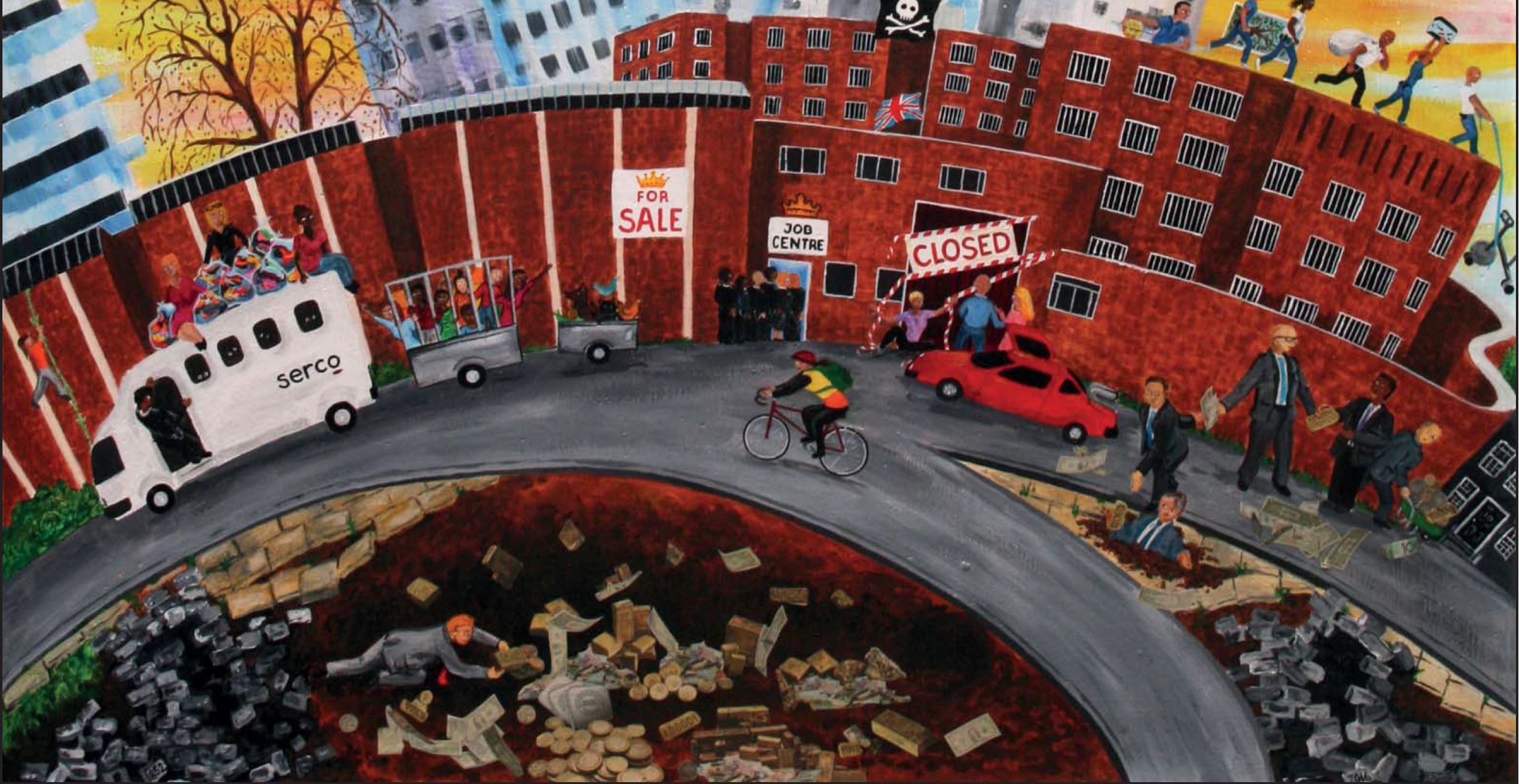There is no prison for women in London
It’s been two years since the surprise announcement, made by the Chancellor of the Exchequer at the 2015 Autumn Spending Review, that HMP Holloway – the largest women’s prison in Western Europe, and the only women’s prison in London was to be closed.
By the end of 2015, the prison had begun a rapid process of closure with women immediately being relocated across the remaining prison estate in particular to HMP Bronzefield and HMP Downview. Around 200 women were moved to Downview, a prison which had been empty for two years and was not fully up and running when women were moved in.
More than a year later and women who were once in Holloway are now situated across the country all outside of London. 2016, the year of the prison’s closure, saw the highest number of deaths in prison on record.
Women in Prison has been working to understand and raise awareness of the impact the closure has had and continues to have on women affected by the criminal justice system.
Alongside the Centre for Crime and Justice Studies, WIP has just (7 March 2018) published AFTER HOLLOWAY .
The report has twin focuses. Firstly, it is a consultation with 50 women affected by the criminal justice system many of whom were imprisoned in HMP Holloway asking whether and how the closure has had an impact. Secondly, it canvasses those same women for ideas for what they would like to now see developed on the site. This part of the report feeds into the Community Plan for Holloway, a project from the Centre for Crime and Justice Studies which places the community at the heart of redevelopment plans for the former prison site.
Background
Holloway had a capacity of around 590 women with at least 1,800 women received into the prison every year. The majority of women in prison are serving very short sentences and Holloway reflected this, with nearly 55% of sentenced women serving less than a year and 26.3% less than three months.
Like all prisons, Holloway has a sad history, including inadequate resources to help those with mental illness and other complex needs and a completely unsuitable environment within which to address these issues.
Nevertheless, over the years Holloway had become a national hub for services to help women tackle the complex root causes of offending including mental ill health and experience of trauma. Its closure has meant a substantial reduction in specialist services for women affected by the criminal justice system in London and beyond, as well as the loss of skilled and experienced staff. Sadly, Women in Prison report, since the closure, the women’s prison population and rates of women’s deaths in prison have both risen, and specialist services are under even more financial pressure than previously.
Findings
Between April and July 2017 WIP issued questionnaires and hosted discussion groups with women affected by the criminal justice system. Women were invited to share their thoughts about any impact the closure of the prison has had and their ideas for the future redevelopment of the site. Here are the key findings from this consultation:
1: The closure of Holloway had, and continues to have, a significant negative impact on women affected by the criminal justice system.
The closure caused distress, anxiety, and in some cases significant harm to mental health and wellbeing. For women who were in Holloway up to its closure many felt frustrated, and even sad, about being moved from a prison where the support and facilities were praised and from which they were being so abruptly disconnected.
The closure also appears to have had a knock on impact across the women’s prison estate by causing overcrowding and a great deal of movement for women between prisons in order to accommodate the 500+ Holloway residents. The majority of respondents to this consultation were from London and a reoccurring concern is that they are now in prison far from home meaning it is very costly and difficult (or in some cases impossible) for families to visit.
2: The redevelopment of the Holloway site should include specialist housing for women affected by the criminal justice system.
Supported housing, domestic violence refuges and hostels were among the top suggestions.
3: Support services for mental health and domestic violence were identified by participants as a key need to be developed on the site.
4:The Holloway site should be used to support and empower women.
The majority of respondents called for the land to be used in part as a safe and empowering space specifically for women.
5: The redevelopment should acknowledge that the site was a prison of historical significance.

Many thanks to Erika, an artist who was imprisoned in HMP Holloway for three years for the image above. You can follow @ErikaPostcards on Twitter and see her work at www.recordedinart
Conclusion
It is clear that women affected by the criminal justice system have been greatly impacted upon by the closure of Holloway. The report shows that the closure caused distress and frustration and continues to have a negative impact on those in prison.
I conclude my summary of this report with a series of quotes from women who had served time in Holloway and who were consulted by Women in Prison:
I have been in prison since 2014, been to five prisons, Holloway was the only prison where I saw progress, within myself and life. All that was taken away from me for no reason.
Former prisoner at HMP Holloway Tweet
Prisoners need to be as close to home as possible. Even though I wasn’t in Holloway, I was in Peterborough, this had a direct impact on me and others, as our wing went from a quietish wing to manic. This affects your mental wellbeing.
Former prisoner at HMP Holloway Tweet
It is the overall atmosphere of Holloway that I miss. Staff were approachable and cared for the prisoners, there were more interesting jobs and activities there, the prison was well run.
Former prisoner at HMP Holloway Tweet
People whom are not in prison will have to pay out a lot more money to visit their loved ones. Money is tight as it is and not having a London-based prison will cause a lot of heartache
Former prisoner at HMP Holloway Tweet







4 Responses
I spent 4 months in Holloway after Downview closed in 2013. It was THE worst prison out of the 4 I had been in. No support, uninterested staff for the most part who were of a far lesser quality than those at Downview at the time, for example, appalling food and accommodation, lack of time out of cell compared to other prisons, education and work of lesser quality than at other prisons, pay was less too. yes it was in London BUT compared to other women’s prisons it was substandard at best
Thanks Ali. First hand experience always much appreciated on the blog. Best Wishes. Russell
HMP Holloway evolved a strong and dynamic psychotherapy service which sadly ended with its closure. One service user said “the only way now to receive mental health support eas to come to Holloway prison.” What does this statement say about our society? Several Holloway psychotherapists, drama therapists and art therapists are currently working on a book about therapy in Holloway, “The Last Sentence” which is due to be published soon.
Thanks for your comment Pamela. The Women In Prison report highlights the loss of expertise which was a consequence of the closure of Holloway. Do keep me posted on the book…
Best Wishes
Russell